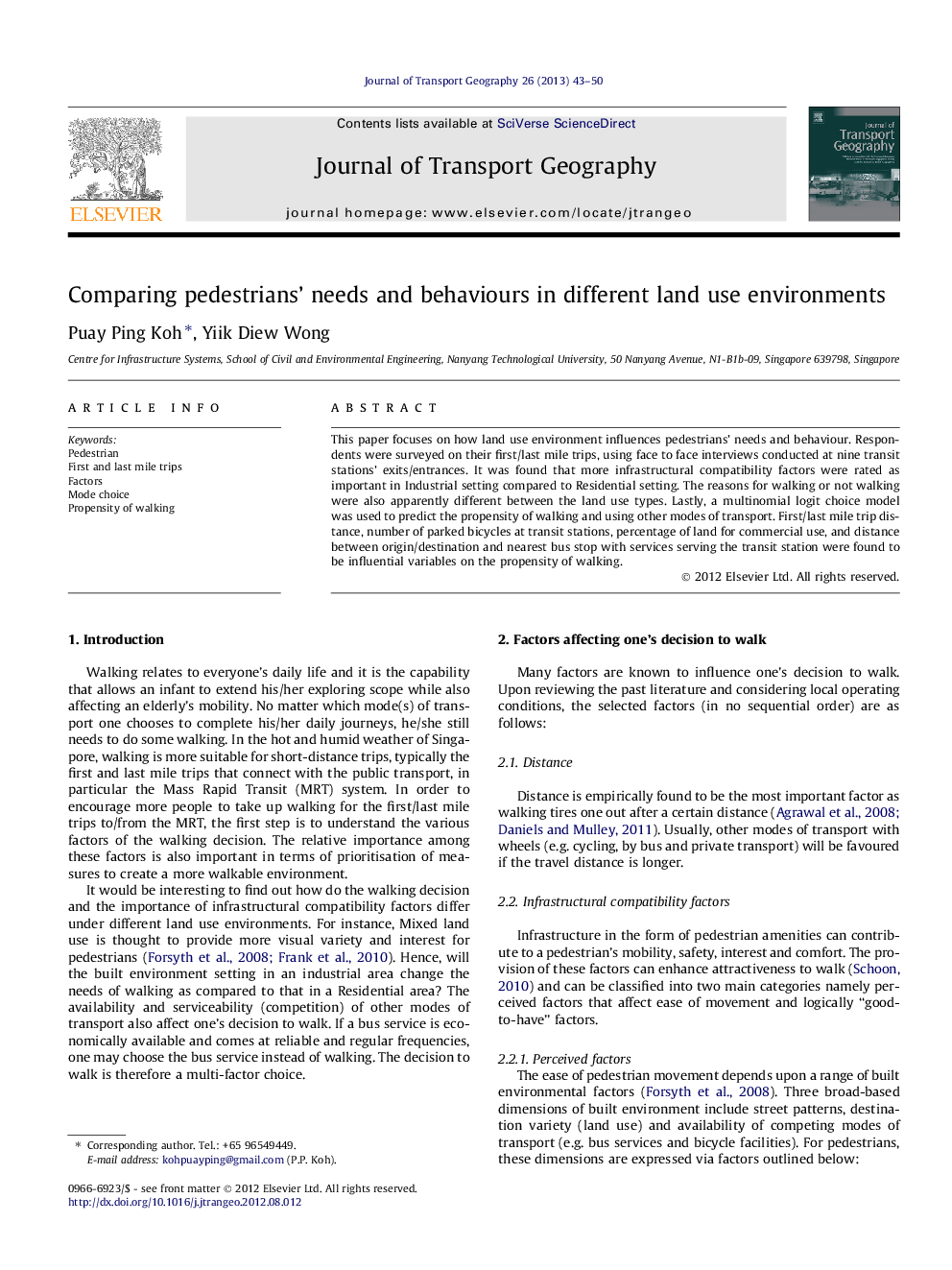| Article ID | Journal | Published Year | Pages | File Type |
|---|---|---|---|---|
| 1059390 | Journal of Transport Geography | 2013 | 8 Pages |
This paper focuses on how land use environment influences pedestrians’ needs and behaviour. Respondents were surveyed on their first/last mile trips, using face to face interviews conducted at nine transit stations’ exits/entrances. It was found that more infrastructural compatibility factors were rated as important in Industrial setting compared to Residential setting. The reasons for walking or not walking were also apparently different between the land use types. Lastly, a multinomial logit choice model was used to predict the propensity of walking and using other modes of transport. First/last mile trip distance, number of parked bicycles at transit stations, percentage of land for commercial use, and distance between origin/destination and nearest bus stop with services serving the transit station were found to be influential variables on the propensity of walking.
► More infrastructural compatibility factors rated as important in Industrial vs. Residential environments. ► Reasons for walking and not walking are mainly distance-related. ► Multinomial logit mode choice model was used to predict propensity of walking.
